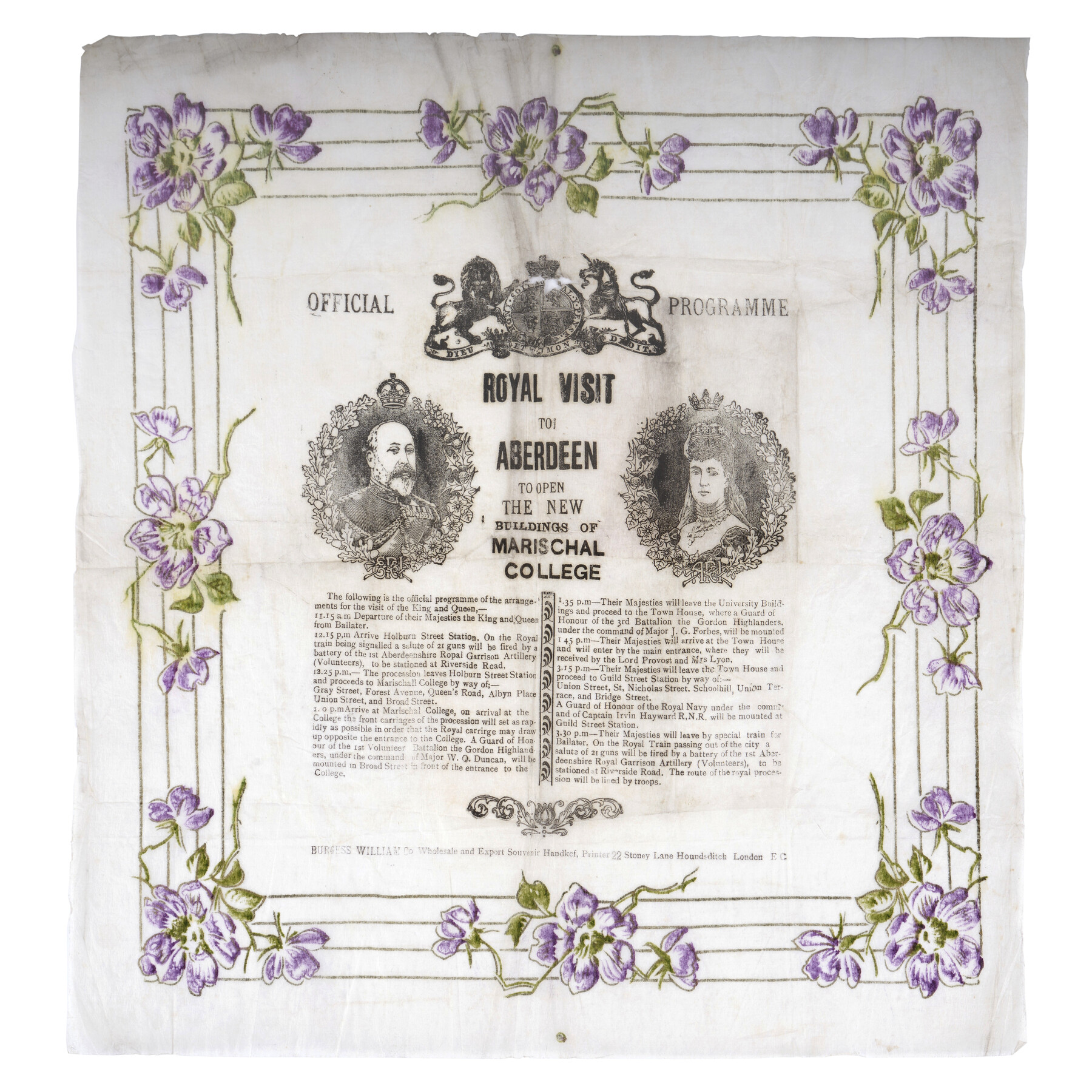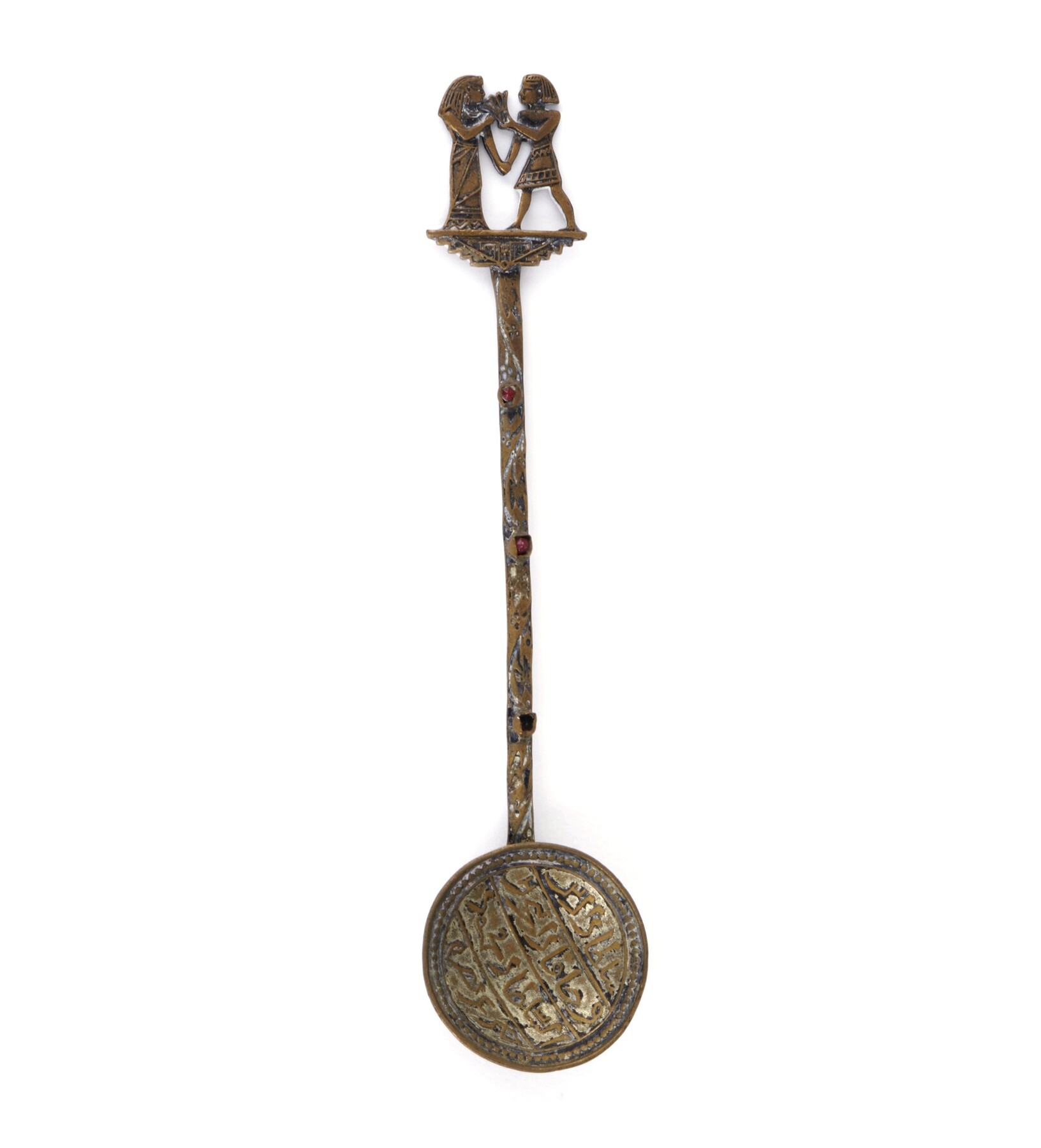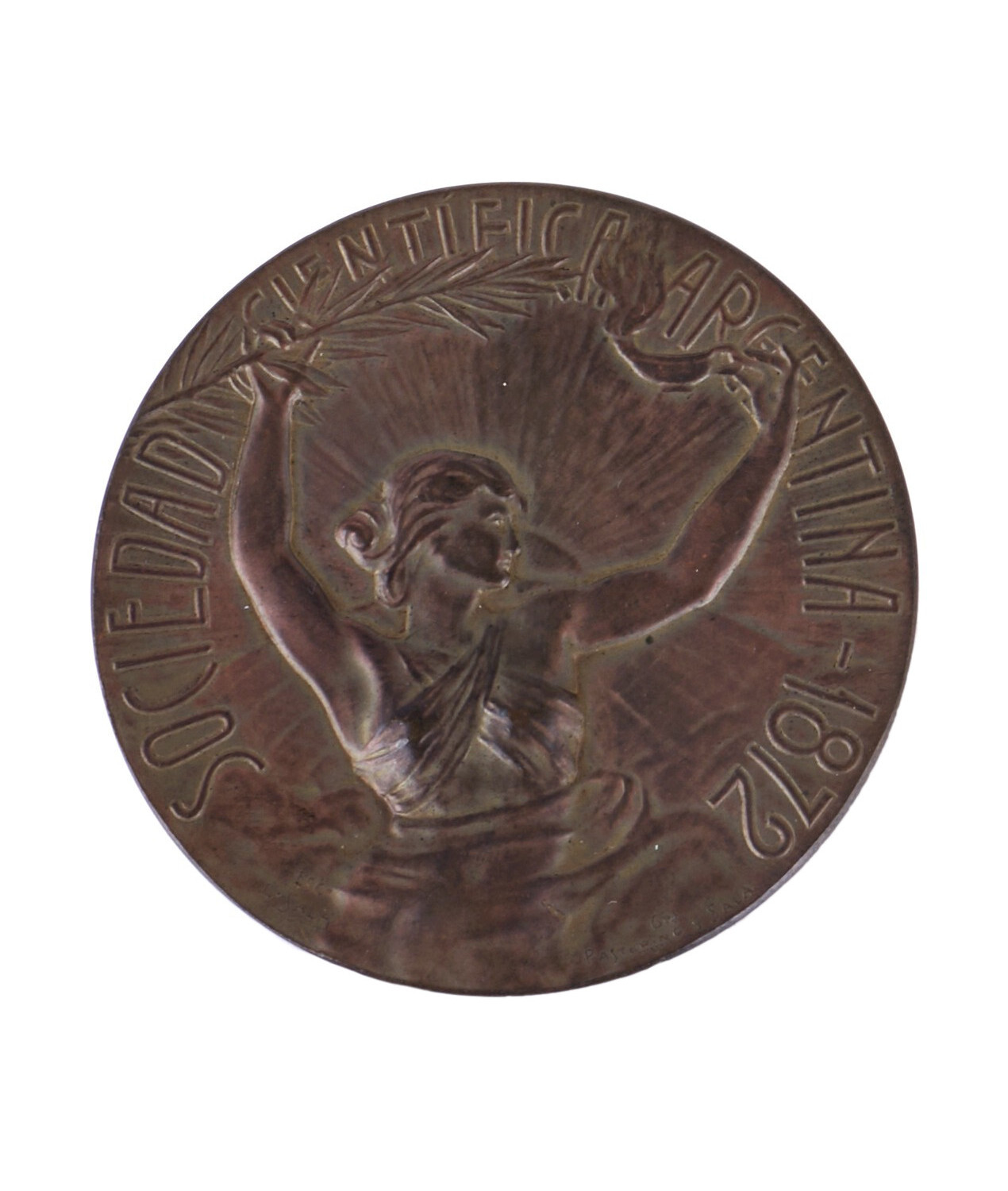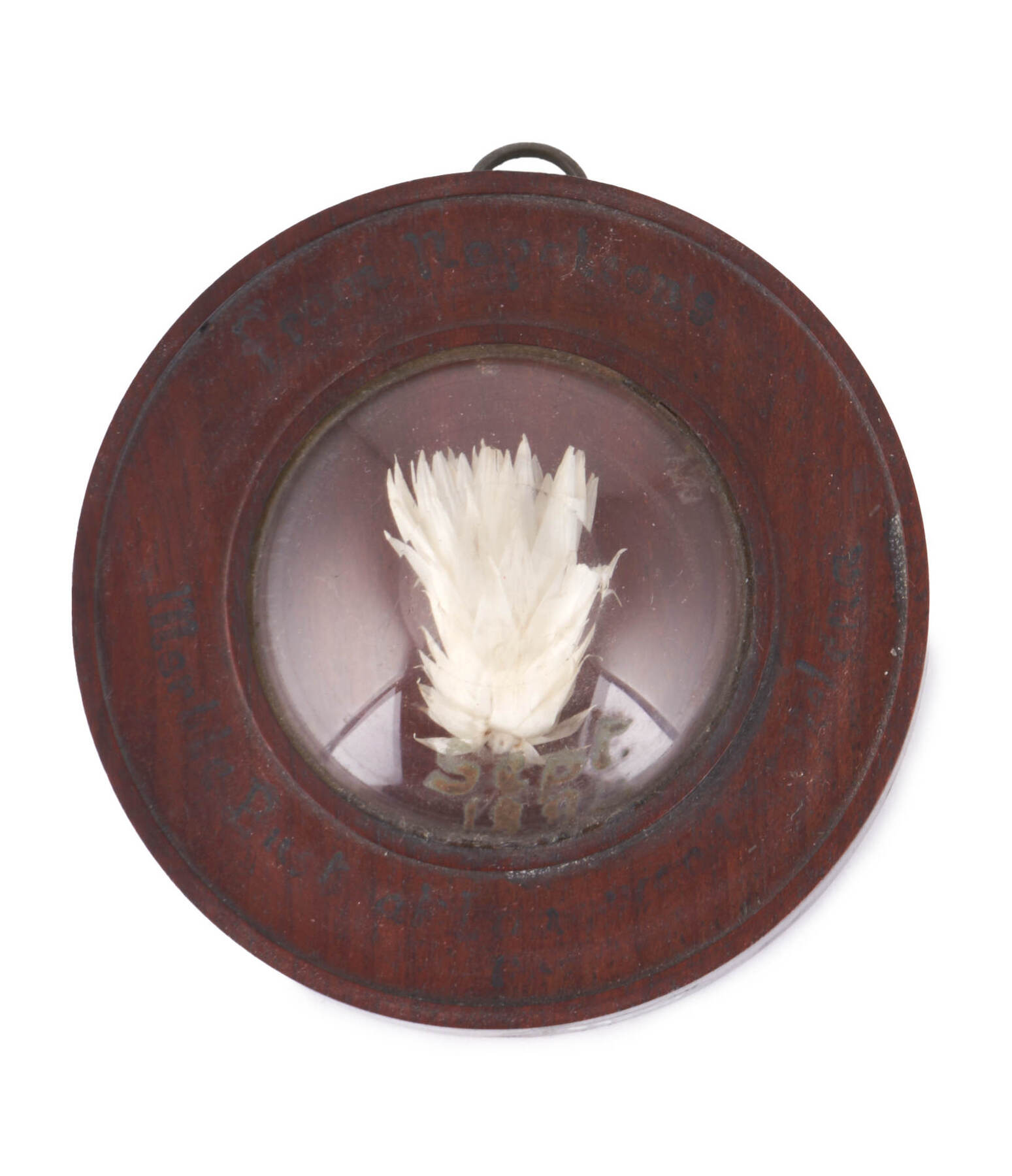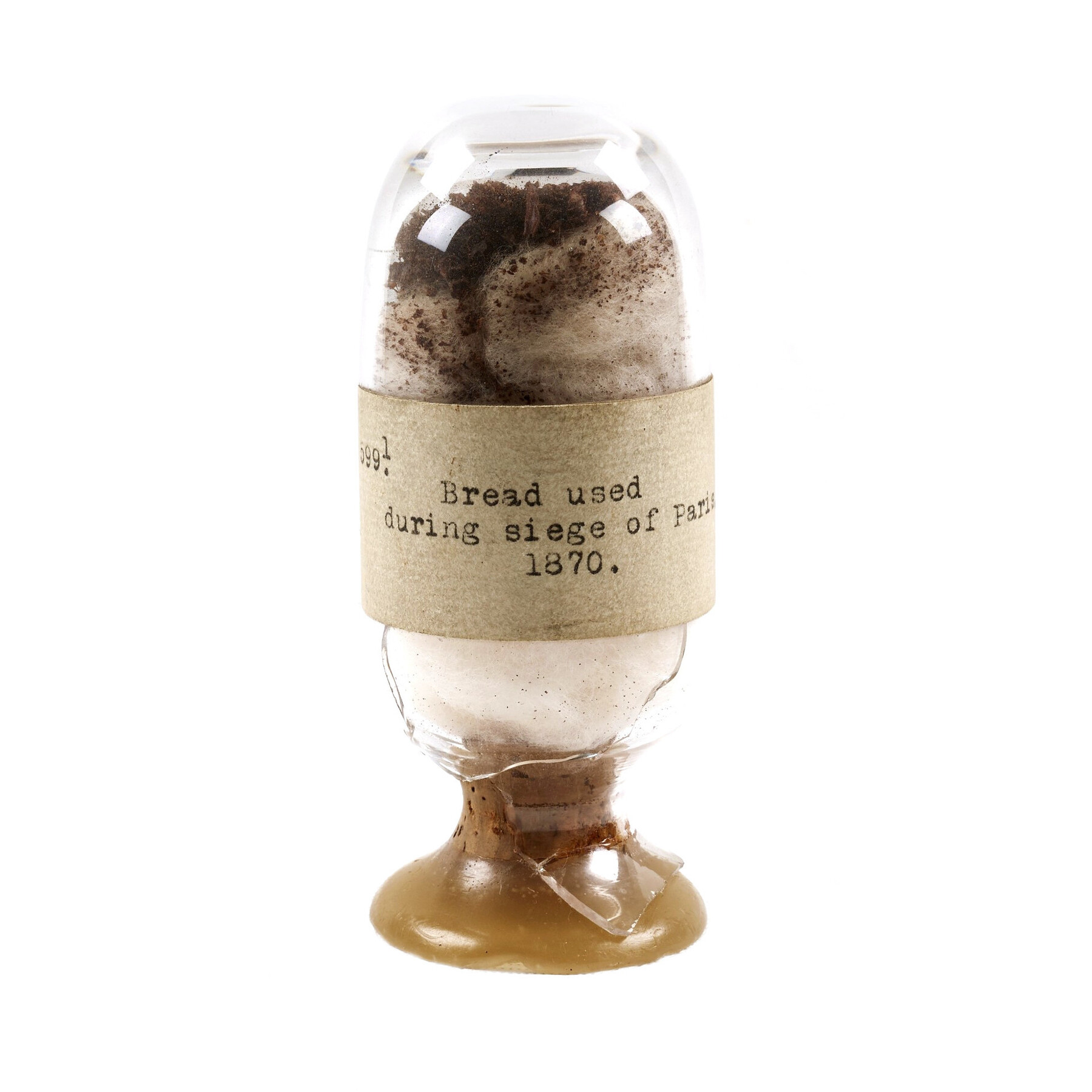Historical Happenings

Have you ever collected or saved something from an important event?
While many people collect mementos of personal significance, people also collect them from historical moments. These types of souvenirs are made to remember famous events and figures. Their value comes from the context of their creation or collection. Many of these souvenirs from the University of Aberdeen museum collections highlight historical events and periods prioritised by European collectors.

Napkin for a royal visit to Aberdeen
The napkin presents the official programme for King Edward VII and Queen Alexandra’s visit to Aberdeen where they opened new additions to Marischal College in 1906. The University was celebrating its 400th anniversary, although this happened 11 years later than planned due to building delays. Napkins were easy to produce in large quantities, making them an appealing souvenir for commemorating important events. ABDUA:36649

Souvenir spoon from Egypt
This spoon uses brass and an imitation coin to produce an inexpensive souvenir. The decorative motifs suggest it is from the early 20th century and reflect tourists’ expectations of Egyptian design. New archaeological discoveries in Egypt led to periods of interest among Europeans. Called ‘Egyptomania’, this fascination with Egypt’s ancient past fuelled Egyptian tourism and souvenir markets. This phenomenon continues today, with tourists purchasing souvenirs inspired by Egyptian artefacts. ABDUA:24390

Medal from Argentina
This medal commemorates both the 1910 American International Scientific Congress held in Buenos Aires and the hundred-year anniversary of Argentina’s 1810 May Revolution. Following the revolution and the end of colonial control, Argentina entered a period in which the state was unable to invest much in the sciences. This changed by 1910, and participants in this international forum were able to bring this souvenir home to remember both the Scientific Congress and ongoing centennial celebrations. ABDUA:13078

Flower from Napoleon’s deathbed on St. Helena
This strawflower memorialises the passing of Napoleon Bonaparte. ‘From Napoleon’s Marble Bust at Longwood St. Helena’ is inscribed on the wood surrounding the bloom. Reportedly, the flower was taken from a memorial in the room where he died at Longwood House in 1821. Even after his exile to this South Atlantic island, Napoleon’s legacy and infamy continued to influence European collectors. ABDUA:39208

Bread from the siege of Paris
Nearly inedible bread containing straw or sawdust was rationed to starving Parisians during the Prussian siege in the winter of 1870-71. While wealthy citizens were able to stockpile supplies, the majority were unable to afford food. Some pieces were preserved as souvenirs and kept as a symbol of Parisian resiliency. Today, these eccentric souvenirs can still be found for sale and in museum collections both in France and abroad. ABDUA:63621


